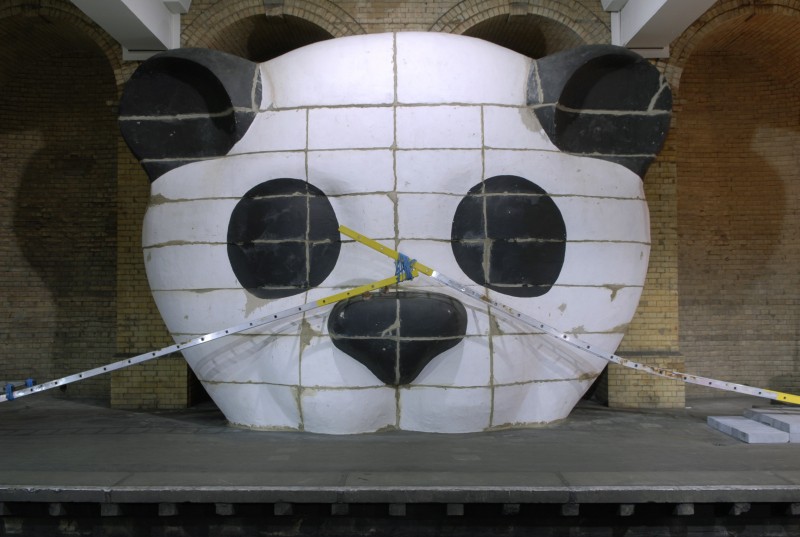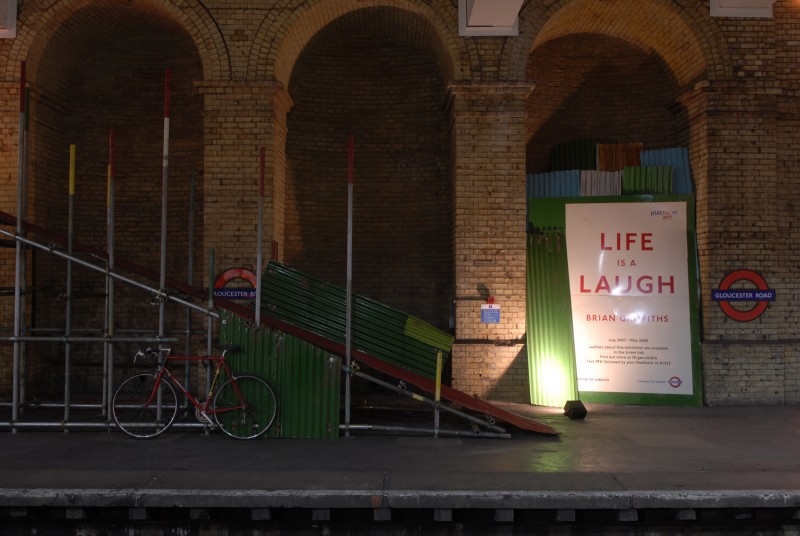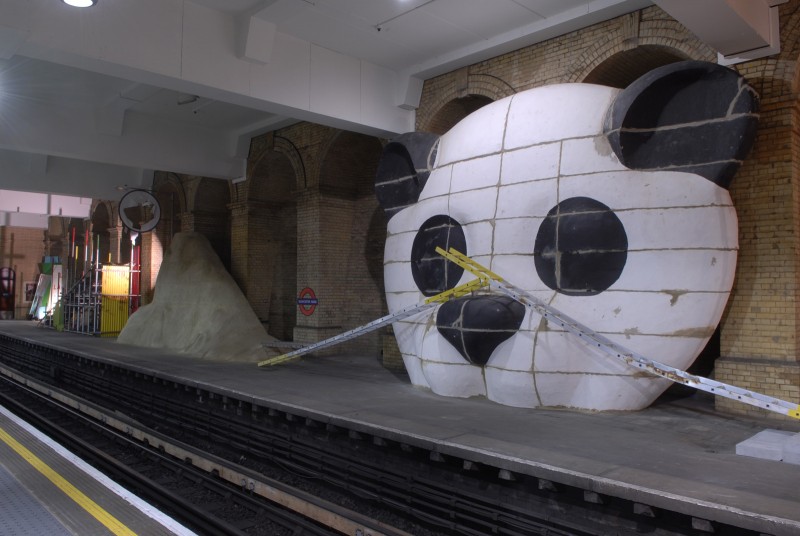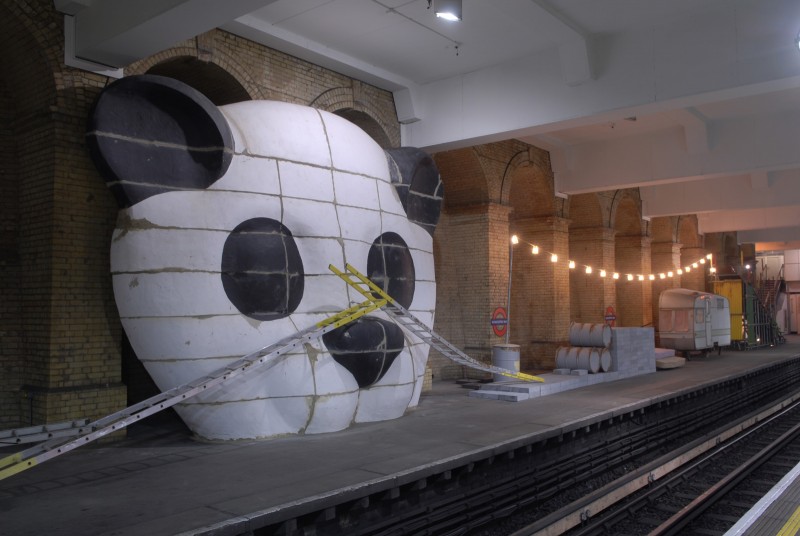Brian Griffiths
Life is a Laugh
A 7.5 metre wide panda’s head along with a 1970s caravan, a lamp post rescued from the M42, a pair of painted scaffolding ramps, a heap of sand, a stack of building blocks, a pile of used mattresses and a single bicycle appeared on the disused platform of Gloucester Road Underground station.
For this sculptural installation, Life Is a Laugh, Brian Griffiths constructed an epic 70-metre long site-specific artwork. Conscious of the transitional nature of both the site and its occupants, his aim in this work was to tap into the character of his fleetingly captive audience, exaggerating a sense of expectation tinged with boredom, mental doodling and day-dreaming. Griffiths’ interest in the theatrical was key to the selection and placement of the eclectic series of objects that ran the course of the platform, transforming it into a giant shelf-like home to abandoned detritus. Punctuated by melodramatic lighting intended to provoke an “activated” viewing on the part of the audience, scale, materials and shape presented a visual assault course encouraging the eye to scramble across the work from one end to the other.
The skill in Griffiths’ work is bound up in the physical making process. He selects and juxtaposes seemingly incongruous yet distinctly familiar objects whose inherent nature imbues a situation or environment with stories, memories, sensations and actions to construct a space for imagination and mental play. The magic and humour in his work stems from the realisation of such liberating conceptual architecture out of contrastingly cumbersome earthbound resources.
About the artist
Brian Griffiths (born 1968, Stratford-on-Avon, UK) is a British artist. Griffiths’ sculptures collage together the debris of everyday life, transforming the mundane into vehicles for the imagination. Drawing inspiration from old textbooks, bric-a-brac, furniture and cast-offs, his works playfully invoke a childlike wonder while acknowledging a melancholy within such make-believe.
In BRIAN GRIFFITHS’ work traditional genres of sculpture are re-thought through the assisted readymade or the fabricated found object. Trading on second-hand ‘conversation pieces’ and their malleability in terms of evoking imagined secret histories, Griffiths views art as a means of escape; a repeated and heroic attempt to leave the here and now and be transported to other places. His sculptures make their appearances as distinctive players: whilst a giant bear head, with its roughly patched concrete surface and painterly graphic face has the stoic air of a now defunct old school entertainer, a wooden box with its glimpse of a pair of shiny tan brogue shoes is enigmatic in its quietness. Elsewhere a twisted and crushed lump of a car becomes a ludicrous showy beast. For Griffiths, conceptual rigor is bound up with processes of making, so that overlooked everyday materials are selected for their potential in opening unto particular and evocative experiences. He uses the histories contained in his objects and materials to enquire into ideas of the flawed and the failed. Objects chosen are often of a bygone era, once aspirational new commodities now fallen; superseded and obsolete. He uses a stark bluntness to ask the viewer to scrutinize received ideals: his objects often deliberately lack the refinement of ‘good form’. Blown out of all proportion, they are jammed uncomfortably into spaces they do not fit, at once fatuous and melancholic. Aspirational, and yet tragically flawed, Griffiths’ works are charged with humour, discontent and sadness.
Commissioned by Art on the Underground

Photo: Andy Keate

Photo: Andy Keate

Photo: Andy Keate

Photo: Andy Keate

Photo: Andy Keate
